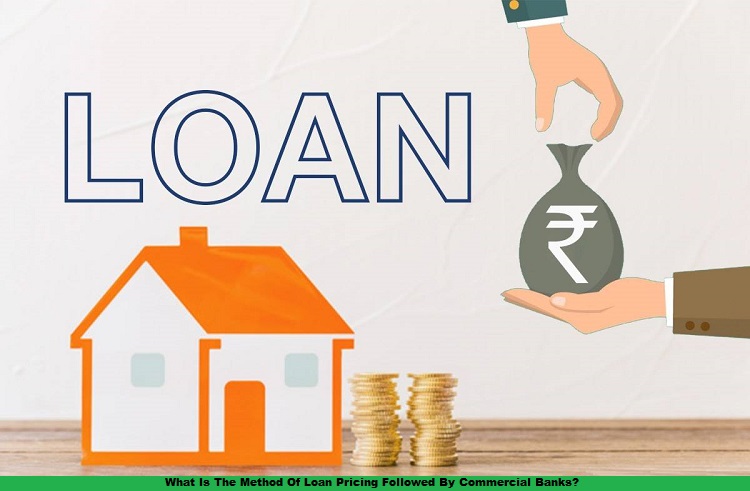Whether or not you have taken a loan from any commercial bank, it is common knowledge that banks charge interest over the amount you borrow. So, to pay off the loan, you pay, principal amount + interest amount. But what is not so common knowledge is how does bank charges this interest, also called loan pricing. So, what is the method of loan pricing followed by commercial banks?
Let’s explore the method of loan pricing followed by commercial banks today.
Let’s start with the basics…
Commercial banks are a mediator between borrowers and lenders. They take from the lenders and give it to the borrowers like those who take loans. So, who forms the lenders? People who deposit their money in the form of savings and current accounts and fixed deposits, etc. Banks also borrow from other sources.
All these funds go into paying for two sets of assets- Earning Assets like loans (they get the banks the interest, so it is an asset) and Non-Earning Assets like maintaining bank premises.
Also read: How Can I Get the Interest Rate Lowered If I Have An FHA Loan?
Now, talking about the give and take, the banks pay the lenders and charge this payment from the borrowers. The banks also make a profit while doing this. Additionally, the interest rate we loan takers pay also includes operational costs and funding went into sourcing these funds, etc.
So, the crux of the whole story is that a loan taker pays the interest that combines operational costs, funding went into sourcing funds, bank’s profit, and not to forget the interest the bank will pay to its lenders.
All of this forms the base interest rate. But there is more. For that, let us move out of the basics and into the main topic- the method of loan pricing followed by commercial banks.
What Is The Method Of Loan Pricing Followed By Commercial Banks
The price of the loan is nothing but the interest rate of the loan. The borrowers pay the interest rate in addition to the principal amount.
In the basics, we learned what the base interest rate is. But as we said, there is more.
We cannot ignore the risk factor associated with banks giving out loans to the borrowers. So, the final interest rate or loan pricing is arrived at by adding the base rate plus the profit/ risk premium for the banks accepting the risk and offering the service.
Base Rate
There are three components of base rate:
- Interest expense:
The interest expense is the interest the banks pay to their lenders, i.e., the people who gave the banks money to extend as loans.
- Administrative Costs:
Administrative costs include expenses like salaries and other costs like maintenance of premises, etc.
- Cost Of Capital:
There is a cost associated with obtaining funds. These are the expenses a bank incurs when it has to arrange funds from its lenders.
So, all these three components combined form the base rate.
Now, let’s explore the profit/ risk premium of the banks.
Profit/ Risk Premium
So, what is a risk? Risk, by definition, is the measurable possibility that you will lose the value.
Are you wondering what do we mean by this? In simple words, it refers to the possibility that the loan taker or borrower will not return the loan as agreed.
Also read: Everything You Need To Know About Bank Reconciliation Statement!
Considering the bank’s condition, a good lending decision will minimize this risk, and risk premium is one such tool.
Thus, a loan taker must pay the bank the risk premium as compensation for the bank assessing and accepting the risk of default.
So, what are some factors that affect the pricing of risk premiums? One of the most critical factors that affect the risk premium pricing is the past performance of the business, industry, or sector. History, in general, has always been a great learning source, and loan pricing is no different. By studying the business’s past performance and its losses, etc., we can form an idea of the risk associated with lending loans to it.
Thus. We can conclude,
Price of the loan = Base Rate + Risk Premium
But here are some last notes about loan pricing:
- The final interest rate arrived at should be such that it is comfortable to the customer, and they should deem it fair, keeping in mind the service and loan received.
- It is not an exact science. A lot many variables have to be considered regarding the supply and demand of funds. And thus, there are several ways to calculate the loan pricing. And this takes us to our next topic.
So, now that we know the recipe ingredients, you can cook this recipe in various ways. Let’s take a look at some of these!
Various Methods Of Loan Pricing Followed By Commercial Banks
| Pricing Method | Characteristics |
| Fixed-Rate | This rate remains fixed for the entire tenure of the loan and is agreed upon at the origination. |
| Variable Rate | As the name defines, the rate keeps changing. A minimum rate is agreed upon, and changes occur depending on the supply and demand of the fund. |
| Prime Rate | This rate is a discounted rate, only for highly honored clients with a good record. |
| The General Customer Rate | This rate is for the masses. Also, it is usually higher than the prime rate. |
| Prime Times | This is a special rate. It is way higher than the prime rate. In prime times, if the loan’s maturity is increased or decreased, then the rate also increases or decreases in multiples. |
| Caps And Floors | Caps and Floors are used in variable rate loans. Caps are the maximum rate, and floors are the minimum rate in which a variable rate can vary. |
Conclusion
Summarizing the above information, there are various methods of loan pricing followed by commercial banks. But the main factors that contribute to the methods are the base rate and risk premium. In addition to this, the many qualitative and quantitative aspects of the supply and demand of funds also play a crucial role.
All the above factors combine to form what we call the loan pricing.
So, this was all. We hope this article was informative and valuable. And that you liked it. If you have any suggestions, doubts, or questions, please leave them in the comments section. We are all ears!







